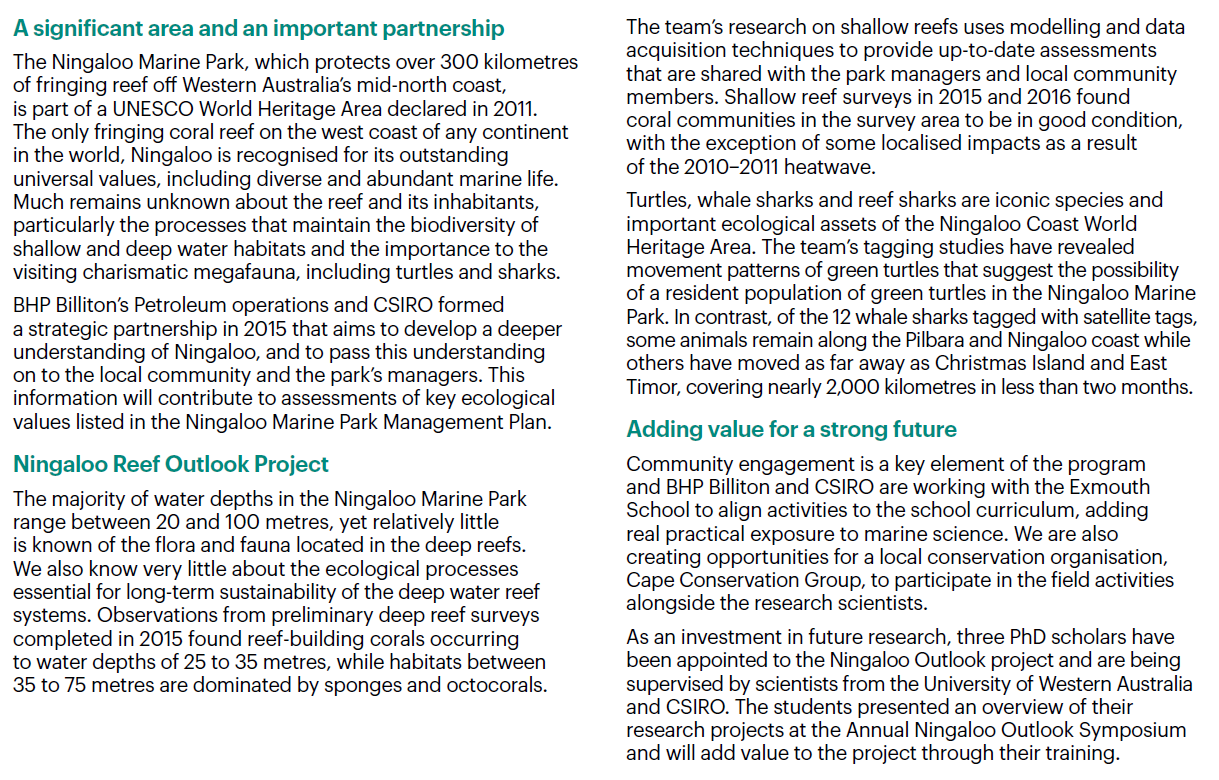
As the project manager of the above case study project, one of your first priorities would be to consider your projects key milestones and the outcomes you will need to deliver during the projects lifecycle (project management term).
- What are the principal processes you would draw on in order to determine those key milestones and required outcomes?
- Explain the significance of these processes, and analyze potential interdependencies in their application or operation.
- Support your answer with examples (must) from the case study project (examples may be actual, inferred, or hypothetical).
A significant area and an important partnership The Ningaloo Marine Park, which protects over 300 kilometres of fringing reef off Western Australia's mid-north coast, is part of a UNESCO World Heritage Area declared in 2011. The only fringing coral reef on the west coast of any continent in the world, Ningaloo is recognised for its outstanding universal values, including diverse and abundant marine life. Much remains unknown about the reef and its inhabitants, particularly the processes that maintain the biodiversity of shallow and deep water habitats and the importance to the visiting charismatic megafauna, including turtles and sharks. BHP Billiton's Petroleum operations and CSIRO formed a strategic partnership in 2015 that aims to develop a deeper understanding of Ningaloo, and to pass this understanding on to the local community and the park's managers. This information will contribute to assessments of key ecological values listed in the Ningaloo Marine Park Management Plan. Ningaloo Reef Outlook Project The majority of water depths in the Ningaloo Marine Park range between 20 and 100 metres, yet relatively little is known of the flora and fauna located in the deep reefs. We also know very little about the ecological processes essential for long-term sustainability of the deep water reef systems. Observations from preliminary deep reef surveys completed in 2015 found reef-building corals occurring to water depths of 25 to 35 metres, while habitats between 35 to 75 metres are dominated by sponges and octocorals. The team's research on shallow reefs uses modelling and data acquisition techniques to provide up-to-date assessments that are shared with the park managers and local community members. Shallow reef surveys in 2015 and 2016 found coral communities in the survey area to be in good condition, with the exception of some localised impacts as a result of the 2010-2011 heatwave. Turtles, whale sharks and reef sharks are iconic species and important ecological assets of the Ningaloo Coast World Heritage Area. The team's tagging studies have revealed movement patterns of green turtles that suggest the possibility of a resident population of green turtles in the Ningaloo Marine Park. In contrast, of the 12 whale sharks tagged with satellite tags, some animals remain along the Pilbara and Ningaloo coast while others have moved as far away as Christmas Island and East Timor, covering nearly 2,000 kilometres in less than two months. Adding value for a strong future Community engagement is a key element of the program and BHP Billiton and CSIRO are working with the Exmouth School to align activities to the school curriculum, adding real practical exposure to marine science. We are also creating opportunities for a local conservation organisation, Cape Conservation Group, to participate in the field activities alongside the research scientists. As an investment in future research, three PhD scholars have been appointed to the Ningaloo Outlook project and are being supervised by scientists from the University of Western Australia and CSIRO. The students presented an overview of their research projects at the Annual Ningaloo Outlook Symposium and will add value to the project through their training







